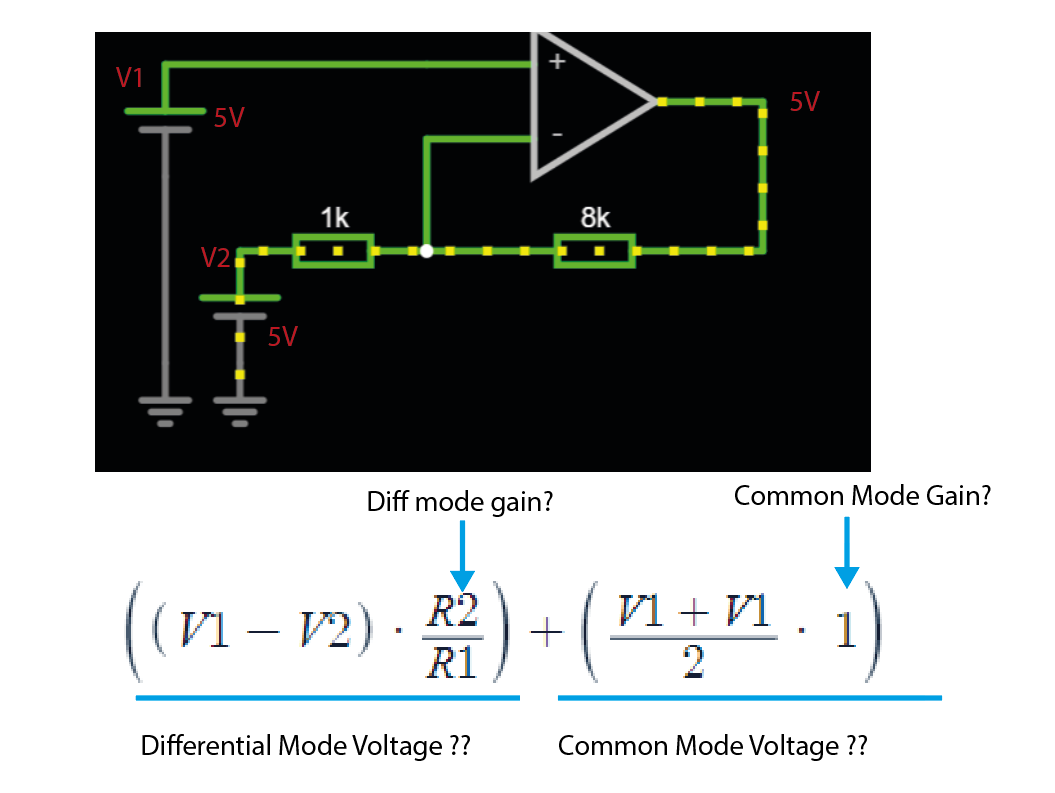Non-inverting op-amp configuration multiplying common mode voltage by 1?
And can this equation be considered correct? While learning about op-amps, we made the assumption that common mode gain was considered zero. Does this only apply to difference amplifier configuration? If this equation is correct, is common mode noise included in the output in a non-inverting op-amp configuration?

